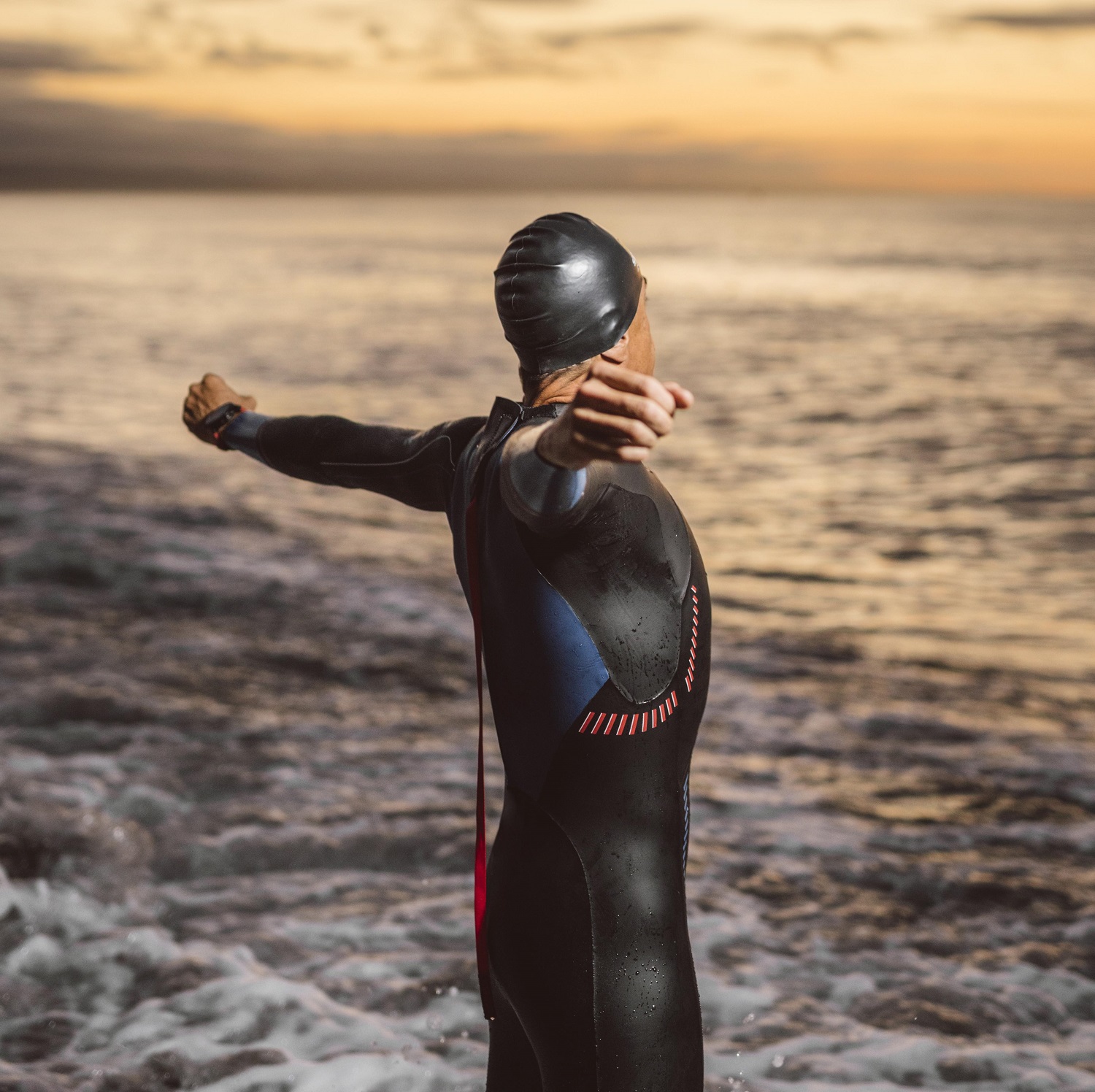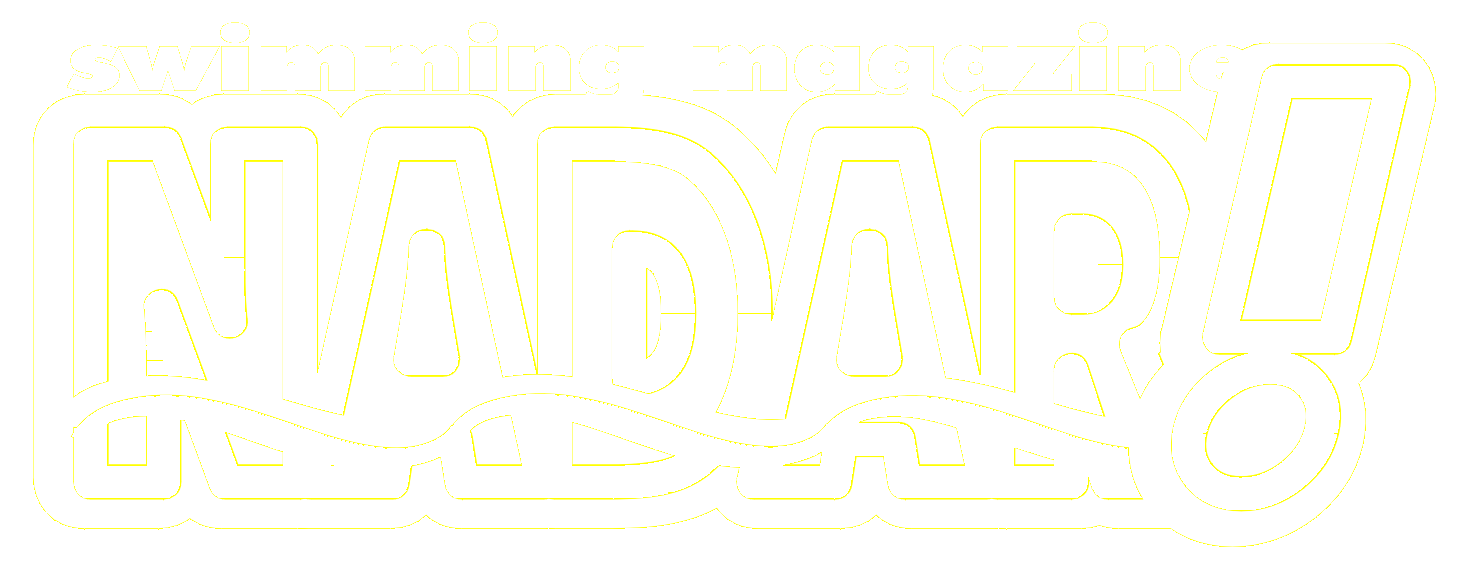Benefícios e riscos da natação em águas abertas para a saúde, o bem-estar e o meio ambiente, segundo relatos dos próprios participantes
Evidências transversais de uma pesquisa com nadadores escoceses

Downloads
Palavras-chave:
Natação, Águas Abertas, SaúdeResumo
O contato com ambientes naturais beneficia a saúde humana, proporcionando oportunidades para interações sociais, melhorando o bem-estar mental e disponibilizando espaços ao ar livre para exercícios físicos. A natação em águas abertas tem experimentado um rápido aumento de popularidade, em parte devido aos benefícios para a saúde física que proporciona, mas também ao crescente interesse em (re)conectar-se com a natureza para interações entre meio ambiente e saúde. Realizando uma pesquisa online em escala nacional com 717 nadadores de águas abertas, o objetivo deste estudo foi investigar padrões e tendências nos benefícios e riscos percebidos da natação em águas abertas para a saúde pública e o meio ambiente; e compreender se esses riscos e benefícios percebidos variam entre diferentes tipologias de nadadores e ambientes de águas abertas, ou "espaços azuis". Foram encontradas fortes associações entre o benefício mais importante relatado pelos próprios participantes em relação à natação em águas abertas e tanto a idade quanto a categorização de seu estilo típico de natação. Todos os grupos etários pesquisados, com exceção de um, consideraram os benefícios para o bem-estar mental como o benefício mais importante da natação em águas abertas; enquanto aqueles com mais de 65 anos identificaram os benefícios para o bem-estar físico, em vez do mental, como o resultado mais importante. Os participantes que preferiam nadar em lagos relataram maior preocupação com os possíveis danos ambientais causados pela crescente popularidade da natação em águas abertas, em comparação com aqueles que praticavam natação em rios ou no mar. No entanto, a maioria dos participantes considerou os riscos ambientais da natação em águas abertas como mínimos. Nosso estudo contribui para o crescente corpo de evidências de que a natação em águas abertas é percebida pelos participantes como benéfica para seu bem-estar físico e mental. Uma melhor compreensão dos benefícios e riscos da interação com espaços azuis utilizados para a natação em águas abertas pode contribuir para o desenvolvimento de políticas públicas colaborativas que promovam oportunidades de recreação ao ar livre mais seguras, saudáveis e sustentáveis, associadas a essa atividade cada vez mais popular.
Referências
(1) Barton J, Pretty J. What is the best dose of nature and green exercise for improving mental health? A multi-study analysis. Env Science Tech. 2010; 44: 3947–3955. doi: 10.1021/es903183r (DOI)
(2) Hartig T, Mitchell R, De Vries S, Frumkin H. Nature and health. Annual Rev Public Health. 2014; 35: 207–228. doi: 10.1146/annurev-publhealth-032013-182443 (DOI)
(3) Geiger SJ, White MP, Davison SM, Zhang L, McMeel O, Kellett P, et al. Coastal proximity and visits are associated with better health but may not buffer health inequalities. Communications Earth & Environ. 2023; 4: 166.
(4) Rojas-Rueda D, Nieuwenhuijsen MJ, Gascon M, Perez-Leon D, Mudu P. Green spaces and mortality: a systematic review and meta-analysis of cohort studies. Lancet Planetary Health. 2019; 3: e469–e477. doi: 10.1016/S2542-5196(19)30215-3 (DOI)
(5) McDougall CW, Quilliam RS, Hanley N, Oliver DM. Freshwater blue space and population health: An emerging research agenda. Sci Total Environ. 2020; 737: 140196. doi: 10.1016/j.scitotenv.2020.140196 (DOI)
(6) White MP, Elliott LR, Grellier J, Economou T, Bell S, Bratman GN, et al. Associations between green/blue spaces and mental health across 18 countries. Sci Reports. 2020; 11: 8903. (DOI)
(7) Foley R, Kistemann T. Blue space geographies: Enabling health in place. Health & Place. 2015; 35: 157–165. doi: 10.1016/j.healthplace.2015.07.003 (DOI)
(8) White MP, Pahl S, Wheeler BW, Fleming LEF, Depledge MH. The ‘Blue Gym’: What can blue space do for you and what can you do for blue space? J. Marine Biol. Assoc. UK. 2016; 96: 5–12.
(9) Massey H, Gorczynski P, Harper CM, Sansom L, McEwan K, Yankouskaya A et al. Perceived impact of outdoor swimming on health: web-based survey. Interactive J Medical Res. 2022; 11: e25589. doi: 10.2196/25589 (DOI)
(10) McDougall CW, Foley R, Hanley N, Quilliam RS, Oliver DM, Freshwater wild swimming, health and well-being: understanding the importance of place and risk. Sustainability. 2022; 14: 6364.
(11) Foley R. Swimming in Ireland: Immersions in therapeutic blue space. Health & Place. 2015; 35: 218–225. doi: 10.1016/j.healthplace.2014.09.015 (DOI)
(12) Wood LE, Vimercati G, Ferrini S, Shackleton RT. Perceptions of ecosystem services and disservices associated with open water swimming. J Outdoor Rec. Tourism. 2022; 37: 00491.
(13) Denton H. Aranda K. The wellbeing benefits of sea swimming. Is it time to revisit the sea cure? Qual. Res. Sport, Exercise Health, 2022; 12: 647–663.
(14) Li H, Browning MH, Rigolon A, Larson LR, Taff D, Labib SM, et al. Beyond “bluespace” and “greenspace”: A narrative review of possible health benefits from exposure to other natural landscapes. Sci. Total Environ. 2023; 856: 159292. doi: 10.1016/j.scitotenv.2022.159292 (DOI)
(15) Bates C, Moles K. Bobbing in the park: wild swimming, conviviality and belonging. Leisure Studies. 2022; 1–13.
(16) Roviello V, Gilhen-Baker M, Roviello GN, Lichtfouse E. River therapy. Environ. Chem Letts. 2022; 20: 2729–2734. doi: 10.1007/s10311-021-01373-x (DOI)
(17) Winter PL, Selin S, Cerveny L Bricker K. Outdoor recreation, nature-based tourism, and sustainability. Sustainability. 2019; 12: 81.
(18) Whelan MJ, Linstead C, Worrall F, Ormerod SJ, Durance I, Johnson AC, et al. Is water quality in British rivers “better than at any time since the end of the Industrial Revolution”? Sci Total Environ. 2022; 157014. (DOI)
(19) Michalak AM. Study role of climate change in extreme threats to water quality. Nature. 2016; 535: 349–350. doi: 10.1038/535349a (DOI)
(20) Finlay J, Franke T, McKay H, Sims-Gould J. Therapeutic landscapes and wellbeing in later life: Impacts of blue and green spaces for older adults. Health & Place. 2015; 34: 97–106. doi: 10.1016/j.healthplace.2015.05.001 (DOI)
(21) Jewkes Y, Moran D, Turner J. Just add water: Prisons, therapeutic landscapes and healthy blue space. Criminology & Criminal Justice. 2020; 20: 381–398.
(22) Juster-Horsfield HH, Bell SL. Supporting ‘blue care’ through outdoor water-based activities: practitioner perspectives. Qual. Res. Sport, Exercise Health. 2022; 14: 137–150.
(23) Chyung SY, Roberts K, Swanson I, Hankinson A. Evidence‐based survey design: The use of a midpoint on the Likert scale. Performance Improvement. 2017; 56: 15–23.
(24) Akoglu H. User’s guide to correlation coefficients. Turkish J. Emergency Medicine. 2018; 18: 91–93. (DOI)
(25) Chamberlain M, Marshall AN, Keeler S. Open water swimming: Medical and water quality considerations. Current Sports Medicine Reports. 2019; 18: 121–128. doi: 10.1249/JSR.0000000000000582 (DOI)
(26) Gascon M, Zijlema W, Vert C, White MP, Nieuwenhuijsen MJ. Outdoor blue spaces, human health and well-being: A systematic review of quantitative studies. Int.l J. Hygiene Environ. Health. 2017; 220: 1207–1221. doi: 10.1016/j.ijheh.2017.08.004 (DOI)
(27) Outdoor Swimmer 2021. Trends in Outdoor Swimming Report. ZG Publication Ltd. Available at: https://outdoorswimmer.com/wp-content/uploads/2022/04/TrendsReport_Full_LR.pdf (Accessed 6/6/23).
(28) Zhang H, Nijhuis S, Newton C. Freshwater blue space design and human health: A comprehensive research mapping based on scientometric analysis. Environ. Impact Assess. Review. 2022; 97: 06859.
(29) Mitchell R. Is physical activity in natural environments better for mental health than physical activity in other environments? Social Sci. & Med. 2013; 91: 130–134. doi: 10.1016/j.socscimed.2012.04.012 (DOI)
(30) Ulrich RS, Simons RF, Losito BD, Fiorito E, Miles MA, Zelson M. Stress recovery during exposure to natural and urban environments. J. Environ. Psychol. 1991; 11: 201–230.
(31) Costello L, McDermott ML, Patel P, Dare J. ‘A lot better than medicine’-Self-organised ocean swimming groups as facilitators for healthy ageing. Health & Place. 2019; 60: 102212. doi: 10.1016/j.healthplace.2019.102212 (DOI)
(32) Cooper LW, Powell AP, Rasch J. Master’s swimming: An example of successful aging in competitive sport. Current Sports Med. Reports. 2017; 6: 392–396. (DOI)
(33) Foley R. Swimming as an accretive practice in healthy blue space. Emotion, Space & Society. 2017; 22: 43–51.
(34) Gould S, McLachlan F, McDonald B. Swimming with the Bicheno “Coffee Club”: The textured world of wild swimming. Journal of Sport and Social Issues. 2021; 45: 39–59.
(35) Quilliam RS, Taylor J, Olivre DM. The disparity between regulatory measurements of E. coli in public bathing waters and the public expectation of bathing water quality. J Environ. Manage. 2019; 232: 868–874. doi: 10.1016/j.jenvman.2018.11.138 (DOI)
(36) Oliver DM, Porter KD, Pachepsky YA, Muirhead RW, Reaney SM, Coffey R, et al. Predicting microbial water quality with models: over-arching questions for managing risk in agricultural catchments. Sci Total Environ. 2016; 544: 39–47. doi: 10.1016/j.scitotenv.2015.11.086 (DOI)
(37) Metcalf R, White HL, Moresco V, Ormsby MJ, Oliver DM, Quilliam RS. Sewage-associated plastic waste washed up on beaches can act as a reservoir for faecal bacteria, potential human pathogens, and genes for antimicrobial resistance. Marine Poll. Bull. 2022; 180: 113766. doi: 10.1016/j.marpolbul.2022.113766 (DOI)
(38) Eregno FE, Tryland I, Tjomsland T, Myrmel M, Robertson L, Heistad A. Quantitative microbial risk assessment combined with hydrodynamic modelling to estimate the public health risk associated with bathing after rainfall events. Sci Total Environ. 2016; 548: 270–279. doi: 10.1016/j.scitotenv.2016.01.034 (DOI)
(39) Evers C, Phoenix C. Relationships between recreation and pollution when striving for wellbeing in blue spaces. Int J. Environ. Res. Public Health. 2022; 19: 4170. doi: 10.3390/ijerph19074170 (DOI)
(40) Armitage R, Sewage in UK waters: a raw deal for wild swimmers. British J. General Practice. 2022; 72: 486–487.
(41) Defra (2022). Event duration monitoring–storm overflows–annual returns. Available at: https://environment.data.gov.uk/dataset/21e15f12-0df8-4bfc-b763-45226c16a8ac. (Accessed 13th May 2023)
(42) Scottish Water. 2023. Overflow spill data. Available at: https://www.scottishwater.co.uk/Your-Home/Your-Waste-Water/Overflow-Spill-Data (Accessed 1st June 2023).
(43) Ziv G, Mullin K, Boeuf B, Fincham W, Taylor N. Villalobos-Jiménez, G, et al. Water quality is a poor predictor of recreational hotspots in England. PLoS One. 2016; 11: e0166950. (DOI)
(44) Martin L, White MP, Hunt A, Richardson M, Pahl S, Burt J. Nature contact, nature connectedness and associations with health, wellbeing and pro-environmental behaviours. J. Environ. Psych. 2020; 68: 101389.
(45) Dokulil MT. Environmental impacts of tourism on lakes. Eutrophication: causes, consequences and control. 2014; 2: 81–88.
(46) Britton E, Kindermann G, Domegan C, Carlin C. Blue care: A systematic review of blue space interventions for health and wellbeing. Health Promotion International. 2020; 35: 50–69. doi: 10.1093/heapro/day103 (DOI)
(47) Royal Society for the Prevention of Accidents. 2021. WAID Scotland 2021 Summary for Water Safety Scotland. Available at: https://www.nationalwatersafety.org.uk/media/1314/waid-scotland-2021-summary-11-final.pdf (Accessed 1st June 2023).
______________________________________
This article has been adapted and translated into Portuguese by the editors of NADAR! SWIMMING MAGAZINE for republication, in accordance with the journal's submission guidelines. Original version available at: https://pmc.ncbi.nlm.nih.gov/articles/PMC10461842/ ORIGINAL AND ADAPTATION LICENSE: Attribution 4.0 International CC BY 4.0. https://creativecommons.org/licenses/by/4.0/.
IMAGE: Image for illustrative purposes only. SOURCE: Freepik (https://www.freepik.com/author/freepik)
Publicado
Como Citar
Edição
Seção
ARK
Licença
Copyright (c) 2025 David M Oliver, Craig W McDougall, Tony Robertson, Blair Grant, Nick Hanley, Richard S Quilliam, Dharmendra Kumar Meena

Este trabalho está licenciado sob uma licença Creative Commons Attribution 4.0 International License.






